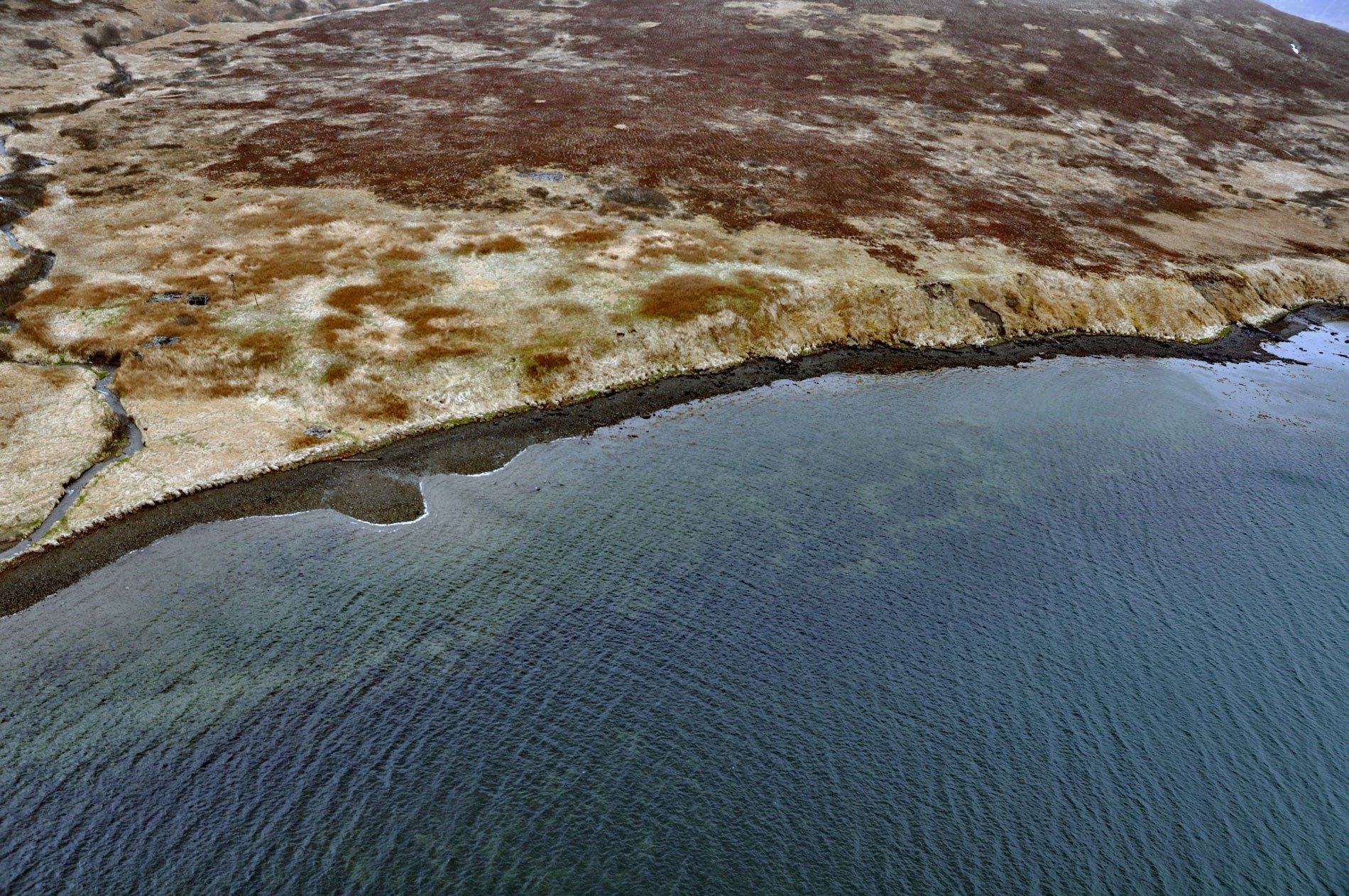Morzhovoi is an abandoned village on the southern shore of Trader Cove and the eastern shore of Bechevin Bay, on the Alaska Peninsula, about 5.5 miles (8.9 km) northeast of False Pass, Alaska. The name was adopted from the ancient Aleut village of Qaxatix, located on Village Cove in northeastern Bechevin Bay, which was called “Selo Morzhovskoe” by the Russians, meaning “walrus village”. The name was first published in 1847 on charts from the Russian Hydrographic Department. Bechevin Bay is between Unimak Island and the Alaska Peninsula. It was named “Betchevinskoi” by Captain Lutke of the Imperial Russian Navy for the merchant Bechevin, of Irkutsk, Siberia, who in 1760 sent the vessel Gavril to the Aleutians.
The village of Morzhovoi was probably moved several times by the Russians and came to the present location in about 1830. Because of the destruction and violence during the early period of Russian colonization, many regional Aleut villages were abandoned as the population declined dramatically. During this time, most of the Aleut People moved from the northern and western sides of Unimak Island towards the village of Qaxatix. In 1900, there was only one family left at Qaxatix or “Old” Morzhovoi as more people moved to “New” Morzhovoi on Trader Cove. The new location had a good anchorage for the Russian sailing vessels that were needed to service the Russian-American Company employees and trading post.
In 1895, the settlement of Morzhovoi on Trader Cove consisted of several low frame houses that were the property of the Alaska Commercial Company, and also a Russian Orthodox church and a number of native barabaras. Today, Morzhovoi village has been mostly reclaimed by the tundra. All that remains are the square traces of houses built by Russians and oval pits that were most likely barabaras. The church collapsed and the religious icons were moved to the church at King Cove. The bronze church bells that were cast in Saint Petersburg, and once hung outside the church, were reputedly stolen by crab fishermen in the late 1970s. Read more here and here. Explore more of Morzhovoi here:

